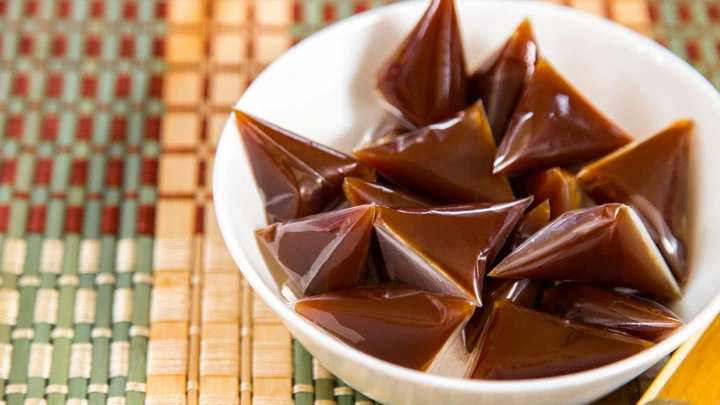
It may be an opportune time to revisit the saga between Tan Kim Hock Tong Seng Food Industry Sdn Bhd (‘TKHTS’) and Tan Kim Hock Product Centre (‘TKHPC’), first covered in our article A Sticky Situation
The case which kicked things off back in 2016 was the High Court case of Tan Kim Hock Tong Seng Food Industry Sdn Bhd v Tan Kim Hock Product Centre Sdn Bhd & Siah Siu Eng [2016] 7 MLJ 561.
As a recap, the High Court case involved an application by the defendants, TKHPC and Madam Siah, to set aside a Trade Description Order (‘TDO’) granted to the applicant, TKHTS, for infringing dodol products sold by the TKHPC using a trademark almost identical to TKHTS’s registered trademark without authorisation.
It seems the dodol did not have time to cool before the defendants appealed the High Court’s decision at the Court of Appeal, and subsequently the Federal Court.
This article covers the two legal issues deliberated by the Federal Court case Tan Kim Hock Product Centre Sdn Bhd & Anor v Tan Kim Hock Tong Seng Food Industry Sdn Bhd [2018] 2 MLJ:
(a) whether a TDO could be applied for on an ex parte basis under section 9 of the Trade Descriptions Act (‘the Act’) given the criminal consequences imposed by the order; and
(b) whether section 9 of the Act empowers the High Court to determine and declare goods as imitation goods whether on an ex parte basis or at all.
‘Ex-parte’ is defined as ‘on or from one side or party only’. In this context, it means that TKHTS applied to the court for the TDO without the knowledge or involvement of the affected party, TKHPC. The appellant sought to rely on the fact that section 9 of the Act does not explicitly state that a TDO can be applied ex-parte. They provided examples of legislation where explicit provision for ex-parte orders are made, such as section 139 of the Capital Markets and Services Act 2007. Since a TDO obtained under section 9 of the Act imposes criminal liability under section 5 of the same, the appellant claimed they had been denied justice by virtue of being excluded from the proceedings.
It was then a question of statutory interpretation for the apex court of section 9(1) of the Act which states:
Where any person being a registered owner of a registered trade mark under the Trade Marks Act 1976 claim that his rights in respect of such trade mark are being infringed in the course of trade, by any other mark or get-up used by any other person, which is not identical with his registered trade mark but can be passed off as his registered trade mark, he may apply to the High Court to declare that the infringing mark is a false trade description for the purpose of section 8.
Although section 9(1) is silent on whether the application is to be made ex parte or otherwise, it provides that any person ‘may apply to the court’, which grants entire discretion to the court.
The Court had no difficulty adopting a purposive approach to interpretation, in accordance with section 17A of the Interpretation Acts 1948 and 1967, to supplement the words ‘ex parte’ into the provision. YA Dato’ Sri Balia Yusof, delivering the judgment of the Court, opined at paragraph 45 that doing so would ‘achieve the very purpose for the enactment of the provision and satisfy the mischief which the provision seeks to overcome. To borrow the words of Denning LJ in the Seaford Court Estates case, it is to give ‘force and life’ to the intention of the Legislature.’
The legislative purpose of section 9 of the Act is to not only protect the interests of lawful and legal trademark owners, but act as machinery for the enforcement of trademark law aimed at combating and eradicating the problem of imitation or counterfeit goods. For a TDO to be effective, speed and the element of surprise are necessary, since it involves raids and seizures of the offending goods by the Enforcement Division of the Domestic Trade and Consumer Affairs Ministry. Putting the alleged wrongdoer on notice through inter partes proceedings would thwart the objective of a TDO. Alerted to the impending raid, the wrongdoer would have ample time and opportunity to relocate and hide the goods, putting them beyond the reach of the authorities. TDOs are also a necessary means by which the aggrieved party obtains vital evidence to bring a case for an infringement. Such seizures also remove counterfeit goods from circulation, thereby preventing additional harm to consumers and the innocent party through loss of profits and reputation.
The Court emphasized that a person affected by a TDO always has the right to apply to the court to set aside the TDO, as was done by TKPHC when they applied to intervene and set aside the TDO at the High Court in 2016.
Turning to the second question, it was the appellant’s case that section 9 of the Act only empowers the court to make a determination on whether the trade description by use of the mark is false, not whether the goods are imitation. Such a declaration by the High Court that the appellant’s goods were imitation was thus made without jurisdiction and a nullity.
Section 9 of the Act refers to section 8 of the same, where the former states ‘.. he may apply to the High Court to declare that the infringing mark is a false trade description for the purpose of section 8.’.
Section 8(1) describes a trade description as ‘an indication, whether direct or indirect, and by any means given, in respect of any goods or parts of goods relating to any rights in respect of trade mark registered under the Trade Marks Act 1976’. Sections 8(2) and (3) make it an offence for any person who applies a false trade description to any goods as if the goods were subject to any rights relating to registered trade mark, and supplies, offers to supply, exposes for supply and/or has in his possession, custody or control goods bearing a false trade description. Goods bearing a mark which is identical to a registered trademark without the consent of the registered trademark owner of the trade mark are considered goods bearing a false trade description.
The Court held that Section 9 is not a standalone provision and must not be read in isolation. It must follow those goods bearing a false trade description are goods which are not original i.e. imitation goods. When the court declares that a particular mark is a false trade description, it is in effect to declare that the goods bearing or using that mark are imitation goods. The Court did not countenance the appellant’s claim that their goods were not imitation in the sense that they were genuine coconut dodol and not produced from synthetic components imparting anything other than genuine coconut flavour.
The saga between TKHTS and TKHPC is still ongoing. The most recent case involves TKHTS’s successful defence in the Court of Appeal against an action brought by TKHPC to expunge TKHTS’s registered trademark No. M/072924 (Tan Kim Hock Product Centre Sdn Bhd & Anor v TanKim Hock Tong Seng Food Industry Sdn Bhd [2022] 4 MLJ). It will be interesting to see how the saga unfolds.



